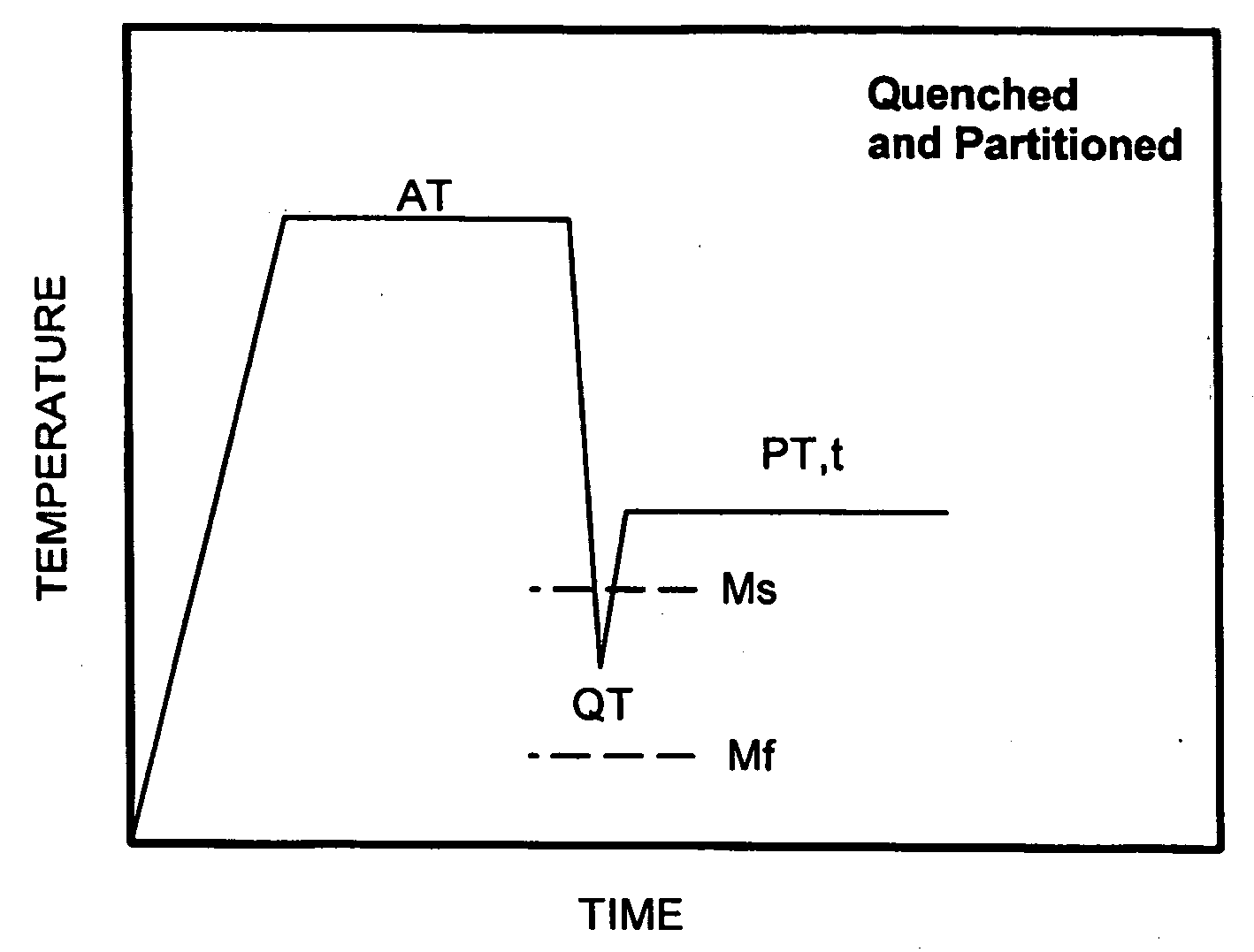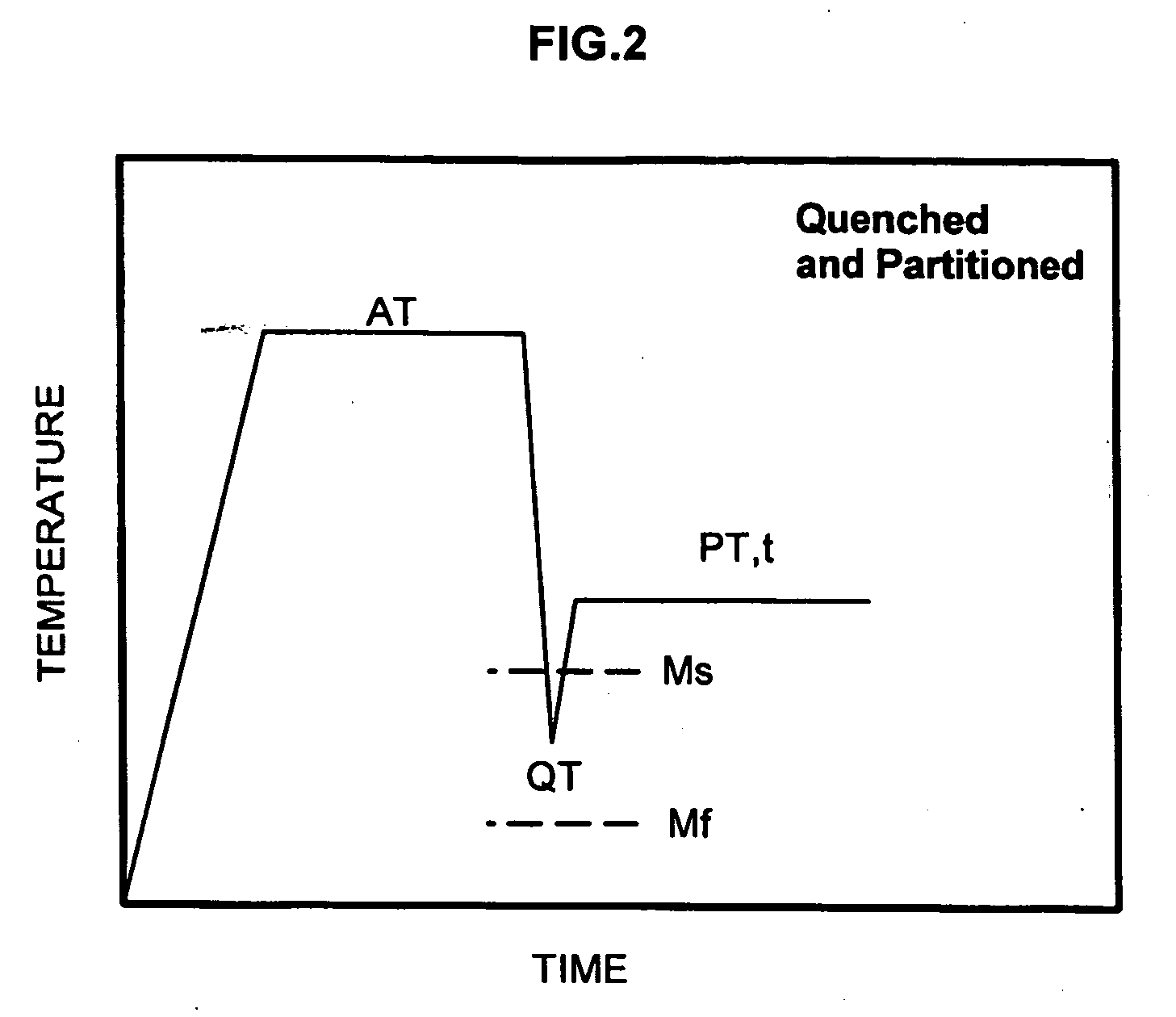Method for producing steel with retained austenite
a technology of austenite and steel, applied in the field of method for producing steel, can solve the problems of time/temperature/alloying approaches that are quite challenging, processing constraints that are needed to control the bainite transformation, etc., and achieve the effect of convenient or less costly processing
- Summary
- Abstract
- Description
- Claims
- Application Information
AI Technical Summary
Benefits of technology
Problems solved by technology
Method used
Image
Examples
example
[0014] The present invention is described with respect to the production of retained austenite in one transformation induced plasticity (TRIP) sheet steel. TRIP sheet steels are of great current interest for automotive sheet applications and high strength products that make use of controlled amounts of retained austenite, typically on the order of 10% austenite. TRIP sheet steel with retained austenite, such as that produced by processes that use bainite transformation, typically in excess of 1% carbon (by weight) in the austenite, are capable of undergoing martensite transformation during deformation. This capability provides several advantages that are useful in various applications. For example, TRIP sheet steel with retained austentite has improved formability, and increased energy absorbance (such as would apply to a vehicle collision in automotive application).
[0015] The microstructures for the TRIP sheet steel of this example also contain equiaxed ferrite, along with differe...
PUM
| Property | Measurement | Unit |
|---|---|---|
| Temperature | aaaaa | aaaaa |
| Mobility | aaaaa | aaaaa |
Abstract
Description
Claims
Application Information
 Login to View More
Login to View More - R&D
- Intellectual Property
- Life Sciences
- Materials
- Tech Scout
- Unparalleled Data Quality
- Higher Quality Content
- 60% Fewer Hallucinations
Browse by: Latest US Patents, China's latest patents, Technical Efficacy Thesaurus, Application Domain, Technology Topic, Popular Technical Reports.
© 2025 PatSnap. All rights reserved.Legal|Privacy policy|Modern Slavery Act Transparency Statement|Sitemap|About US| Contact US: help@patsnap.com



